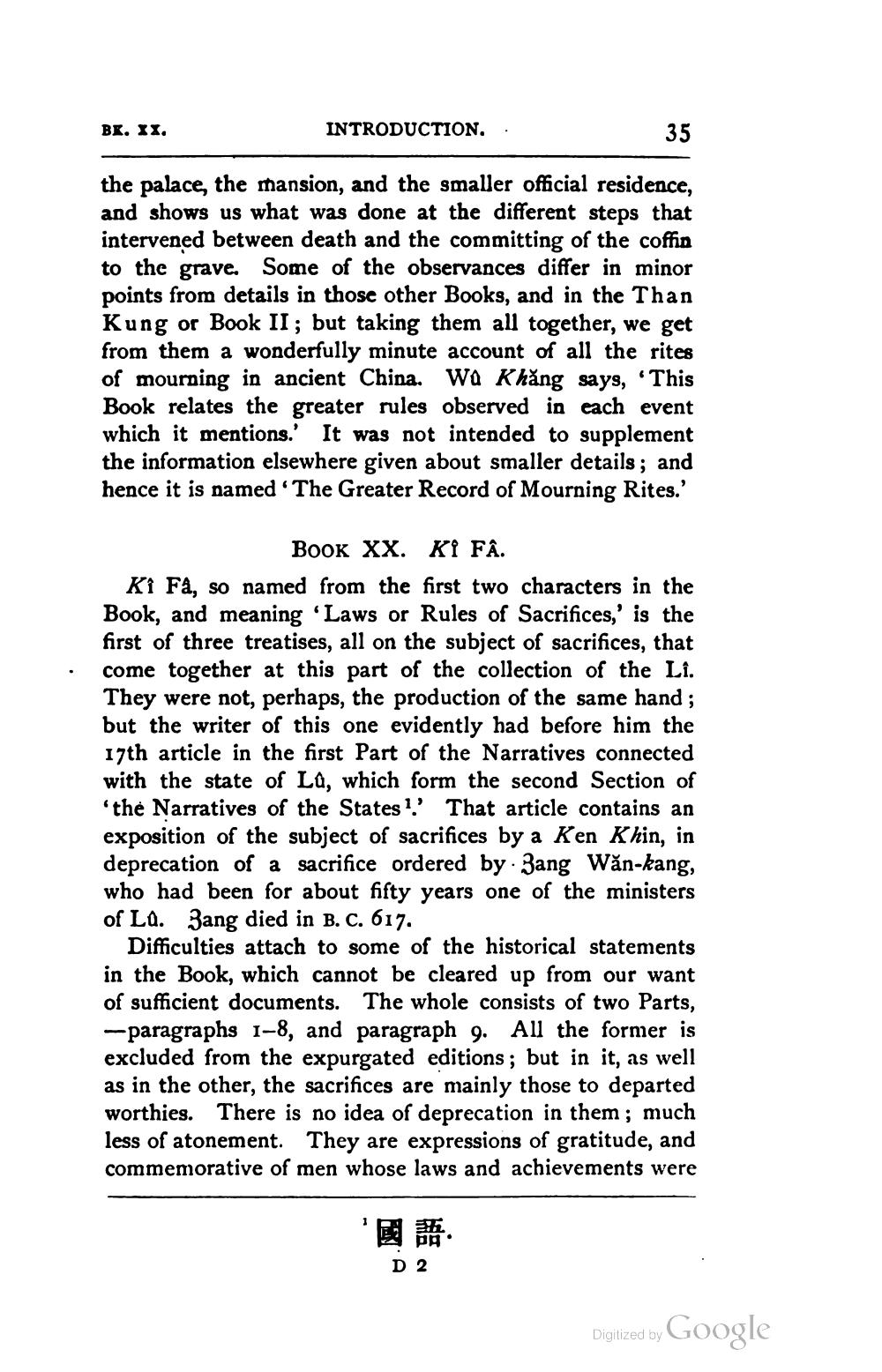________________
BX, IX.
INTRODUCTION, .
35
the palace, the mansion, and the smaller official residence, and shows us what was done at the different steps that intervened between death and the committing of the coffin to the grave. Some of the observances differ in minor points from details in those other Books, and in the Than Kung or Book II ; but taking them all together, we get from them a wonderfully minute account of all the rites of mourning in ancient China. Wa Khăng says, This Book relates the greater rules observed in each event which it mentions. It was not intended to supplement the information elsewhere given about smaller details; and hence it is named 'The Greater Record of Mourning Rites.'
Book XX. KI Fâ. Ki Fa, so named from the first two characters in the Book, and meaning 'Laws or Rules of Sacrifices,' is the first of three treatises, all on the subject of sacrifices, that come together at this part of the collection of the Li. They were not, perhaps, the production of the same hand; but the writer of this one evidently had before him the 17th article in the first part of the Narratives connected with the state of La, which form the second Section of 'the Narratives of the States?' That article contains an exposition of the subject of sacrifices by a Ken Khin, in deprecation of a sacrifice ordered by · Zang Wăn-kang, who had been for about fifty years one of the ministers of La. Zang died in B. C. 617.
Difficulties attach to some of the historical statements in the Book, which cannot be cleared up from our want of sufficient documents. The whole consists of two Parts, - paragraphs 1-8, and paragraph 9. All the former is excluded from the expurgated editions; but in it, as well as in the other, the sacrifices are mainly those to departed worthies. There is no idea of deprecation in them; much less of atonement. They are expressions of gratitude, and commemorative of men whose laws and achievements were
'DE
D2
Digitized by Google




